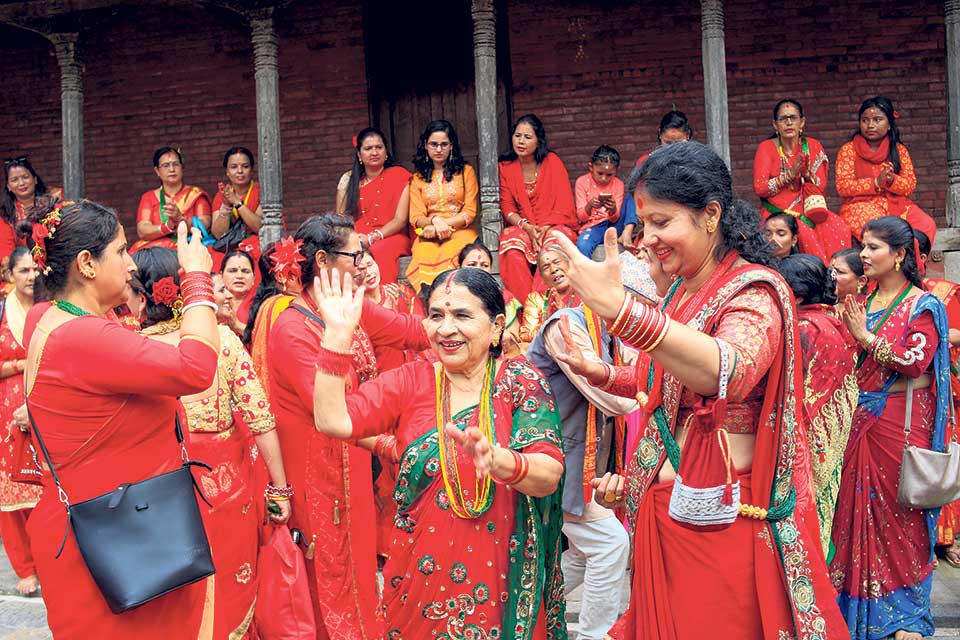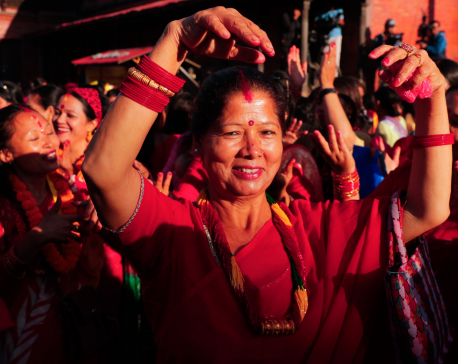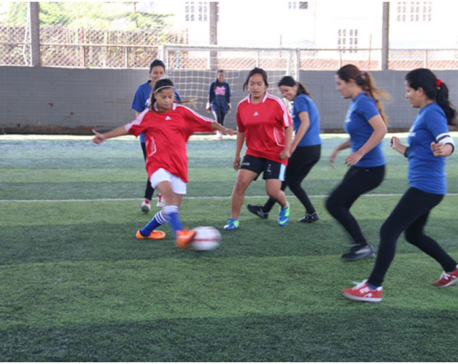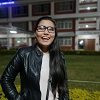
OR
Opinion
Teej Festival: Exploring Essence of Inclusivity
Published On: September 14, 2023 09:15 AM NPT By: Jalasa Sapkota

Festivals are synonymous with rejuvenation, closeness, and togetherness. However, the true essence of these celebrations can often be compromised, rendering them less enjoyable for certain groups, particularly those with disabilities. The limitations and restrictions imposed on their participation in various activities can dilute the charm of these festivities. To illustrate this point, let's delve into the ongoing celebration of Teej, a festival of closeness, songs, dance, and the celebration of beauty.
The concept of celebration has evolved with societal progress and increased socialization. Nowadays, Teej gatherings are ubiquitous, in stark contrast to the past when individuals with disabilities were often left on the fringes of such festivities. Thankfully, this scenario has begun to change. Many organizations for persons with disabilities now enthusiastically organize and participate in Teej celebrations. However, the question remains: Is superficial involvement enough? Should celebration be confined to mere applause from spectators, or can it extend beyond?
During Teej, melodious songs and vibrant dances grace the occasion as women don elegant sarees and other attire to celebrate their beauty. Yet, for women with disabilities, participating in such celebrations can present unique challenges. Are there dance centers that actively promote inclusion in their teaching methods? How many women with disabilities have ventured into the professional dance scene? In the world of beauty, where makeup classes are prevalent, can women with disabilities independently apply makeup while adorning traditional clothing like sarees? The ability to drape a saree properly is a skill possessed by only a few. Is there personality training available for women with disabilities in the realm of beauty and aesthetics?
This discussion is not meant to advocate a narrow definition of beauty or entertainment, limited to songs, dances, and various attires. Instead, it raises the question of why the concepts of beauty and entertainment tend to exclude persons with disabilities. In a world driven by social interaction, the omission of aesthetics for women with disabilities is unjustifiable. While discussions about inclusion have permeated nearly every facet of our institutions today, it's crucial to examine whether these conversations have truly embraced inclusion from a holistic perspective.
In today's world, the call for participation and inclusion has permeated virtually every facet of our society, which is undoubtedly a commendable trend. However, it raises pertinent questions about whether these inclusive agendas genuinely consider the often-overlooked realm of disability inclusion, particularly in cultural celebrations like Teej. I have personally borne witness to a disheartening phenomenon, wherein women with vision impairments exhibit hesitance when it comes to full participation in Teej festivities. This reluctance, I emphasize, does not stem from a lack of interest; rather, it reflects a deeper societal shortcoming in our efforts to incorporate disability inclusion into the fabric of our festivals and cultural celebrations.
This issue leads us to a more profound inquiry, one centered around the themes conveyed in Teej songs. These songs often carry powerful messages of equality, justice, and the cessation of social violence against women. However, it is imperative to scrutinize whether Teej songs adequately represent the experiences and perspectives of individuals with disabilities within their lyrics. Furthermore, when we consider the various competitions revolving around Teej, including singing and dancing contests organized by diverse institutions, we must inquire whether persons with disabilities have been given equitable opportunities to participate. Unfortunately, the reality is that individuals with disabilities often find themselves limited to competitions organized exclusively by disability-focused entities. This glaring disparity prompts us to confront a critical question: Why have we been unable to translate the concept of inclusion from mere rhetoric into tangible, practical reality?
Moreover, we must also reflect on whether individuals with disabilities have ever been showcased in mainstream media while singing Teej songs. In a world where numerous talented singers and composers with disabilities exist, it is imperative that their creativity is given a platform in popular culture and music. Isn't it high time that we, as a society, contemplate extending our commitment to inclusion beyond mere lip service and expand the horizons of inclusiveness across all dimensions, including the creative realm? It is not enough to merely acknowledge the importance of inclusion; we must actively work to dismantle the barriers that hinder the full and equal participation of all, ensuring that diversity and creativity thrive in our cultural celebrations and artistic expressions.
Incorporating inclusivity is imperative across all facets of life, encompassing education, quality of life, culture, and even social festivities. Within the broader realm of culture, cultural traditions and practices play a significant role. It is essential that the opportunity to partake in these celebratory events is made equally accessible to everyone, including individuals with disabilities. Achieving inclusivity in this specific context should be considered a top priority.
This commitment to inclusivity is underscored by the Convention on the Rights of Persons with Disabilities, specifically in Article 30 which pertains to "Participation in cultural life, recreation, leisure, and sport." This article articulates: States Parties acknowledge the inherent right of individuals with disabilities to engage in cultural life on a level playing field with their peers who do not have disabilities. In pursuit of this goal, States Parties commit to implementing all necessary and appropriate measures to ensure that individuals with disabilities:
• Can actively participate in cultural activities and events
• Are provided with the means to enjoy cultural experiences
• Have equal opportunities to engage in recreational and leisure activities
In essence, Article 30 underscores the importance of guaranteeing that individuals with disabilities are not excluded from cultural life, and it underscores the obligation of states to create an inclusive environment where these rights are upheld.
As we continue to revel in festivals like Teej, let's not forget that the true beauty of these celebrations lies in their inclusivity. It's time to ensure that every individual, regardless of their abilities, can fully participate, appreciate, and enjoy these festivities. The journey towards a more inclusive society demands that we recognize the unique needs of every individual, and this recognition should extend to our cultural practices and celebrations.
You May Like This

In Pictures: Teej festival being marked across nation today
KATHMANDU, Sept 18: The festival of ‘Teej,’ a big festival observed by Nepali Hindu women, is being celebrated in a... Read More...

Futsal for the women, by the women and of the women!
KATHMANDU, March 19: WE United Project launched the Mahila Premier League (MPL) on March 18 at Grassroots Recreational Center in Mandikhatar. ... Read More...

Women finding festivals less tedious
KATHMANDU, Oct 7: Although in the past, festivals meant additional work for women, the scenario is gradually changing. In recent years,... Read More...










Just In
- NRB introduces cautiously flexible measures to address ongoing slowdown in various economic sectors
- Forced Covid-19 cremations: is it too late for redemption?
- NRB to provide collateral-free loans to foreign employment seekers
- NEB to publish Grade 12 results next week
- Body handover begins; Relatives remain dissatisfied with insurance, compensation amount
- NC defers its plan to join Koshi govt
- NRB to review microfinance loan interest rate
- 134 dead in floods and landslides since onset of monsoon this year









Leave A Comment